Thursday Apr 10, 2025
Thursday Apr 10, 2025
Thursday, 6 May 2021 00:00 - - {{hitsCtrl.values.hits}}
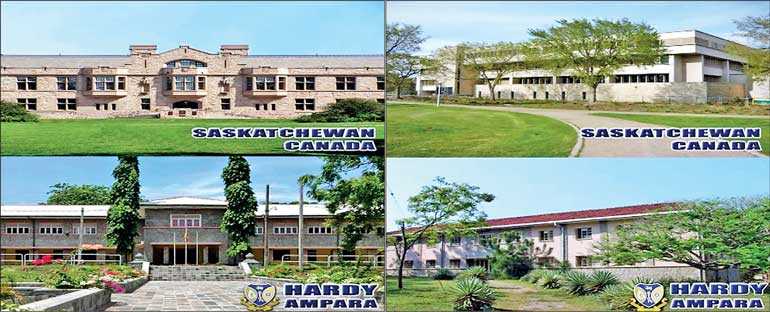
Comparison of main administration buildings and lecture halls of University of Saskatchewan and Hardy
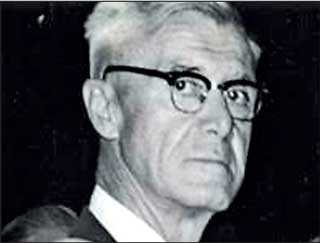 |
| Professor Evan Alan Hardy
|
Since the independence in 1948, the Government of Sri Lanka (then Ceylon) gradually commenced its development projects in different areas of the country. During this period the United Nations and other international organisations extended their assistance for these development projects.
In 1951, the first foreign mission of UN/FAO which was headed by a Canadian citizen and an experienced agricultural engineer, Professor Evan A. Hardy arrived in Sri Lanka (then Ceylon) as an advisor to the Government of Ceylon. Professor Hardy had just completed 30 years of service as an instructor, lecturer and the head of Agricultural Engineering Department at Saskatchewan University, Canada before this appointment.
On arrival, his first assignment was at ‘Maha Illuppallama Agricultural Centre’ of the Department of Agriculture, as there were several similarities in the ground conditions of Dry Zone Farming in Sri Lanka and that of prairie farming in Canada, which enabled the professor to contribute from his past experience. In the meantime, the Government realised the importance of setting up a training centre in Eastern Province and the professor was entrusted to set up a technical training institute at Ampara to produce local engineers and middle management technical officers needed for the development projects in the country, initially for the first multipurpose development project known as ‘Gal Oya Development Project’ under Gal-Oya Development Board (GODB).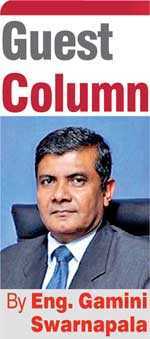
The financial assistance for the institute came from the Colombo Plan, FAO and Asia Foundation. Professor Hardy who was made responsible for the setting up of the new institution at Ampara commenced the construction of buildings, hostel facilities, workshops, laboratories, auditorium and quarters for the staff and other infrastructure facilities
The constructions of the buildings were done under the supervision of the professor and the architectural designs of the buildings and locations were finalised by the professor, which were similar and identical to his University in Canada viz: University of Saskatchewan.
One of the main challenges was to attract teaching and administrative staff for the institute and also students for the courses. Being a remote small town with minimum or no facilities such as health, education, and transport, food commodities, Ampara was one of the difficult places to live at that time. So, making the environment attractive to the incoming staff and students with proper accommodation facilities was one of the main priorities for Professor Hardy. While all these things were happening, Professor Hardy himself dedicated his time to prepare the curriculum and syllabus for the two-year diploma courses in six engineering disciplines viz: Agriculture, Electrical, Mechanical, Civil, Soil and Survey.
Technical Training Institute, Ampara
On 15 January 1956, the Technical Training Institute (TTI) was made ready to commence its operations with ‘Honesty-Training-Industry’ as its motto under the leadership of its founding Director Professor Hardy. Having seen the growth and success the Institute was classified by the international donor countries such as UK and Canada as a ‘Regional TTI’ for South East Asian countries. As a
result, a large number of foreign students from various countries viz: Burma, Malaysia, Borneo, Vietnam, Singapore, Philippines and Thailand were enrolled while lecturers and experts came from the countries like UK, Poland, Germany, South Africa and India.
The technical courses commenced at TTI, Ampara became very popular among young students and there was a high demand for these diplomates not only in our motherland, but also in various foreign countries. Due to high demand for the technically qualified workers by GODB, the two-year diploma courses were delivered on a tightly managed schedule focusing more on practical ‘On the Job training’ in workshops and field, supplemented by lectures.
The diplomates who passed out from Hardy were able to take up challenging positions in the development projects, state and private sector industries and agriculture sector with confidence demonstrating their efficiency, loyalty and effectiveness gained from their education at the Institute. The traditions and ethics inculcated by Professor, later known as ‘Hardy Traditions’, ‘Hardy Spirit’ and ‘Hardy Discipline’ by the students were very much helpful to the diplomates who come out from the Institute, (popularly known as Hardiyan) to have a winning situation at their work places and in the community.
Who is Professor Hardy? The greatest gift from Canada to Sri Lanka
Evan Alan Hardy was born on 1 October 1890 in Sioux City, USA. He was a son of a blacksmith who owned an agricultural farm. Hardy was educated in Sioux City and graduated from high school in 1909 and began his career in his father’s farm for a short period. He obtained his BSc degree in Agricultural Engineering from the Iowa State University in 1917. He joined the academic staff of Saskatchewan University as an Instructor in Agricultural Engineering, and was promoted as Professor in 1919. Professor Hardy obtained his M.Sc. in 1923 and became the head of the Department of Agricultural Engineering at the University of Saskatchewan, Canada in 1926 where he served as a one of the best university academics until he joined the United Nations in 1951. In 1957, he was awarded an Honorary Degree of Doctor of Law by the University of Saskatchewan for his service for the development of agriculture in Saskatchewan province and also at international level, primarily in Ceylon (Sri Lanka).
He was a true advisor and devoted his time during his stay in our country to enhance the knowledge of students, thereby producing efficient, talented engineers/technicians to the world and to uplift the living standards of the communities in and around TTI, Ampara.
In 1917, Professor Hardy married to Lois Hinks who joined her husband during his stay in Sri Lanka and gave her fullest support in all activities undertaken for the betterment of students and rural folk, any student can visit director’s bungalow at any time and discuss any problems. Professor and Mrs Hardy were the parents/ guardians of the students at TTI, and they were blessed with three children who lived in USA.
Initially his contract in Sri Lanka was for one year, but due to his commitment and contribution it was extended further. His service to the TTI was not only to make engineers of men who had no technical experience, but also to get them to assume their responsibility ‘on-the-job.’
Professor Hardy passed away on 4th December 1963 due to natural causes while serving at TTI. As per a request made by the Professor the cremation was held at the TTI premises with the consent of Mrs: Hardy and the funeral arrangements were taken place with the Government’s patronage.
After his death, to honour Professor Hardy, the Engineering Building of Saskatchewan University was named in memory of the late Professor as he was the head of the Agricultural Engineering Department during his tenure of service at the University. Also, the football tournament of the University was named as ‘Hardy Cup’. Further the Saskatoon Collegiate Board honoured Professor Hardy who served the board for many years (1932-1940) by naming the new College at Central avenue, as ‘Evan Hardy Collegiate School’.
Then what has happened to ‘Hardy’?
As a tribute to the founder director Professor Evan Alan Hardy, the TTI was renamed as ‘Hardy Technical Training Institute’ (HTTI) in 1963 to honour his yeoman service rendered to technical education system in Sri Lanka.
His successors were capable enough to maintain the excellence in technical education at the same level. More students were enrolled from all over the country as the demand for the placements in the courses increased. However, the Technical Education Unit of Department of Education took over the HTTI in 1967 and continued ‘National Diploma in Technology’ course in disciplines of Agriculture, Mechanical, Electrical and Civil and renamed the institution as ‘Hardy Senior Technical Institute’ (HSTI).
In 1970 except the Agricultural Engineering course the second year of NDT courses were moved to Katubedda Campus of University of Moratuwa. Hence in the late 1970 and early 1980s some departments of GOSL such as Mahaweli, Irrigation, Surveying and Agrarian services, special training programs were conducted at HSTI to fulfil the trained technicians to the cadre as an urgent requirement of the country. In 1988 all the NDT courses were taken over by Katubedda whilst the NDT Agriculture course remaining at HSTI.
However due to some managerial problems and shortage of suitable staff the quality of the NDT Agriculture course went down. Hence the number of students were low and the unsafe situation during the war period also created an impact for the declining trend of HSTI. Further due to the security situation prevailed in the country for 30 years the activities of the institute were paralysed, and in some instances, the security forces occupied the buildings and hostel for their use. Hence the functions of the institute were not in a normal manner.
In 1994 the then Government decided to hand over the HSTI to the Ministry of Labour and Vocational Training Development, but due to the protest of the students the proposal was not materialised. In 1995 the HSTI was taken over by the ‘Sri Lanka Institute of Advanced Technological Education’ (SLIATE) which is under the Ministry of Higher Education and renamed as ‘Hardy Advanced Technological Institute’ (HATI) and the NDT Agriculture Engineering course was converted to a Higher National Diploma in Technology – Agriculture (HNDT-A).
Present status
Currently at HATI, six diploma courses are being conducted i.e.: HNDT – Agriculture, HND- Accountancy, Management, English, Information Technology, Hotel Management and Hospitality. In addition to HSTI, Hardy Technical College (COT) which is under the Ministry of Skills Development, Vocational Education, Research and Innovation is also operation in the same premises. This decision has created an unpleasant situation among the students of both institutions and it created some confusions over the student affairs and qualification issues, etc. The students and old students of this historical institute’s fervent hope for the future is to maintain the name ‘Hardy’ to this institute only, which was raised by Professor Hardy.
It is a known fact that the Hardy Institute is currently going through a difficult period with several management and resource constraints and has not properly utilised its full potential as a national asset. Most of the buildings are underutilised and some buildings constructed halfway and abounded.
Reasons, potential and facilities available for upgrading
Government’s role
It is a well-known fact that Professor Hardy did a marvellous job for the technical education of Sri Lanka and it was an aim of Professor Hardy to elevate this institution to university status blending with academic training at the highest level. He built this Institute on the models of Saskatchewan University having in mind the aforesaid ultimate goal.
The Governments who came in to power in different periods also realised the importance of the Professor’s goal and taken some actions to embark on the proposals submitted by different groups to upgrade the institute, but unfortunately those are only the hopes for the students, people living in the area and citizens of the country.
It is pertinent to mention that during the ‘Deyata Kirula’ program of a previous Government which led by the present Prime Minister, then the President Mahinda Rajapaksa, in 2013 a ‘Deyata Kirula’ exhibition was arranged at Ampara and HATI was the venue of the exhibition and Rs: 1.075 billion was spent on the constructions at HSTI.
Further the reports reveal that, then Minister of Telecommunication and Information Technology and the Chairman of Sri Lanka’s Development exhibition ‘Deyata Kirula’, Ranjith Siyambalapitiya expressed his views and assured that the HATI in Ampara will be upgraded as a University parallel to the exhibition and it will be the Island first technology university. Unfortunately, this too was not materialised.
However, the present President’s manifesto ‘Saubagye Dekma’ also provides ample room to upgrade this 65-year-old institution to a national university level with a minimal expenditure as most of the infrastructural facilities are already available. If the HATI is upgraded to a university, it will benefit not only the people of Ampara district, but also the other peripheral districts such as Monaragala, Badulla, etc., and the island as a whole.
This institution is ideal for a university specialised in Dry Zone Agriculture and other affiliated courses viz: Agriculture Technology, Irrigation and Water Management, Food security, Land management, Indigenous Knowledge and Culture, etc. can be included, or, there may be an opportunity to affiliate this institution with a suitable foreign university, which will benefit our country in numerous ways.
It was also noted that President Gotabaya Rajapaksa already had taken some innovative actions to initiate its upgrading and meeting the expectations of the students, parents, old students, people in the area and the region. This may be an asset to the country as a whole and it will re-establish the recognition of the world which existed during Professor Hardy’s era.
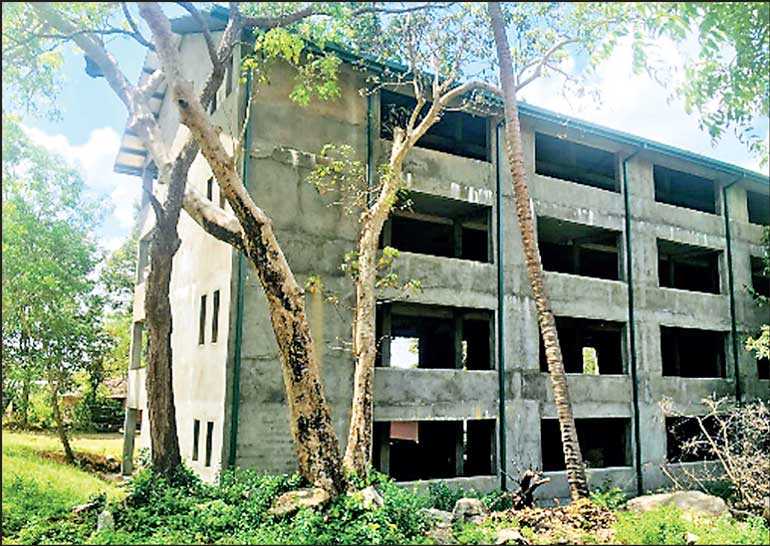
Partially constructed lecture halls
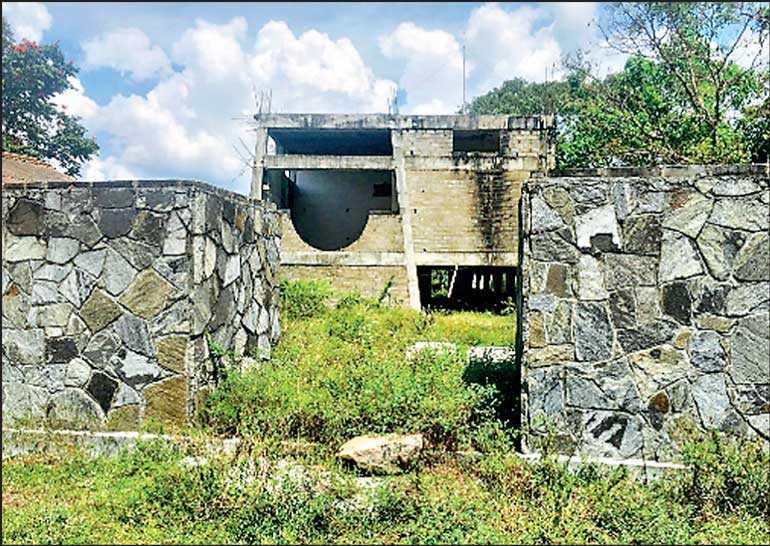
Gym – not completed
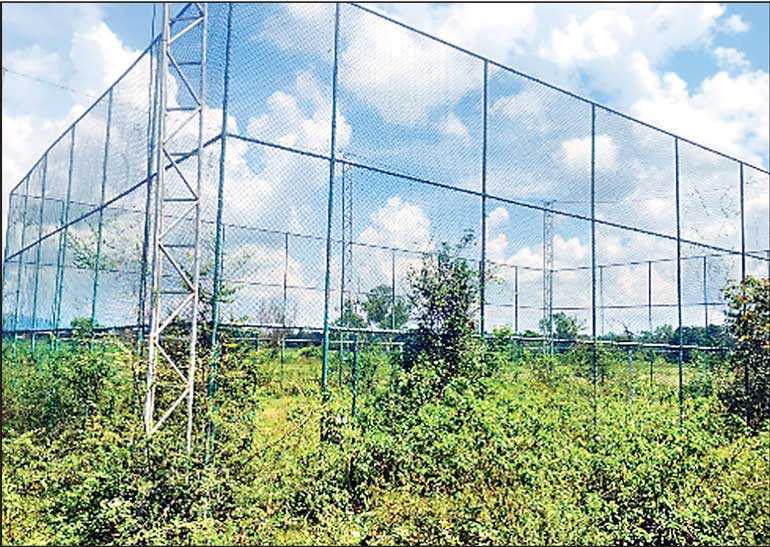
Volleyball court
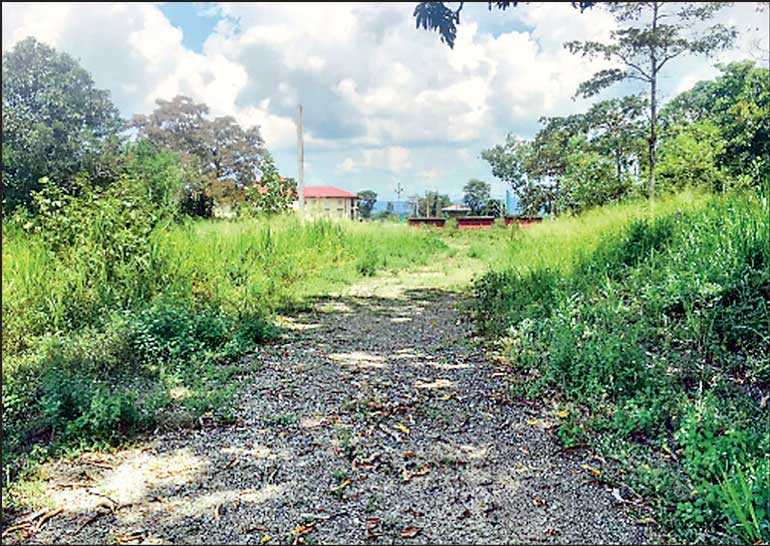
(The writer can be reached at [email protected]/+94 777414768.)